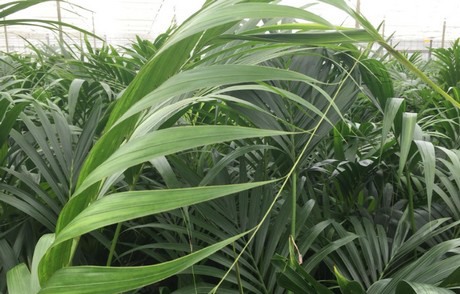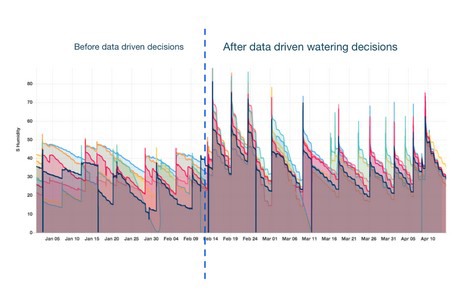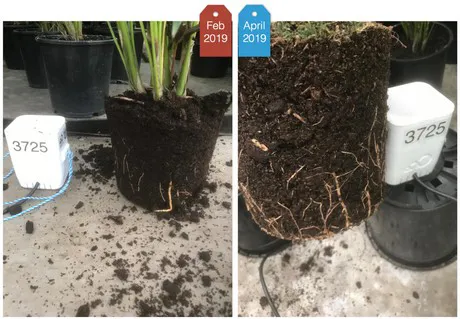What do modern growers do, when their plants are facing problems? With state of the art sensor technology, growers measure climate variables to discover problems, and improve the cultivation process and plant health effectively.
That’s how Blom Kentia Palmen, a Dutch grower and family business led by the brothers Paul and Christian Blom, came in contact with Sigrow. Kentia is ran from Aalsmeer by these two young entrepreneurs, and is arguably one of the most modern palm nurseries in the world. The latter, being a leading company in this type of sensor technology, helped to find ways the cultivation process could be optimized. Below, you find out what recommended adjustments and improvements could be made based on data recorded.
 Kentia Palm (Howea. forsteriana) is a species of flowering plant in the palm family, a popular plant these days, amongst others to be found in IKEA. Cultivation of Kentia palm requires diffuse light and warm temperatures. The roots are very sensitive to water excess, temperature, high salinity, fungus and other parasites.
Kentia Palm (Howea. forsteriana) is a species of flowering plant in the palm family, a popular plant these days, amongst others to be found in IKEA. Cultivation of Kentia palm requires diffuse light and warm temperatures. The roots are very sensitive to water excess, temperature, high salinity, fungus and other parasites.
An ambitious challenge
When the technology was first introduced to Christian Blom by Gerard Wapenaar from Klasmann Deilmann – since beginning of this year, Sigrow and the substrate producer joined forces – he stated “a 5% improvement thanks to the sensors is not enough, we aim for 50% improvement”.
To that, cultivation expert at Botany Peter Korsten added that new leaves in Kentia adapt to higher light intensities through forming higher stomatal density; however this process must be executed slowly and supported by strong roots so the plants can cool down transpiring and uptaking micronutrients like Magnesium. Stomata closure could happen if roots are not supplying enough water to the top part of the plant and this could lead to yellow stripes in medium-height and new leaves. Something undesirable for interior design plants where dark green, spotless leaves are a must to hit category A+ and sell them for the highest price.
Starting from the bottom. Good roots = good foundation for higher light intensities
Therefore, the first goal was to increase root mass, the second to increase light.
“From January to February we started monitoring with 10 Soil Pro sensors in 2 sections of the greenhouse”, Javi Lomas at Sigrow says. “Since the soil conditions were different in both sections of the greenhouse, we used this to our advantage to setup a randomized experiment. Every 2 weeks the growers would rate with a number from 0-10 the roots of the plants under monitoring.
Discovery
After 6 weeks it was found that the following conditions led to improved root growth:
- Soil temperature < Air temperature // Allows the natural hormonal balance of the plant
- Watering only if WC on top < 20%
- Low EC watering if Soil EC > 1.2 mS/cm
After the 15th of February the irrigation system got upgraded to homogenise watering of the plants. The real-time data integration provided the opportunity to make data-based decisions.
Although the Day Light integral of the plants and maximum PAR were still at the same level the root growth in April was already significantly better. This is shown on the photos below.


Improve: Creating the perfect efficiency
“Currently, the results are even better”, Javi concludes. “The grower was able to make adjustments in irrigation and lighting strategy. In short, the plants have stronger roots at higher levels of Day Light integral. The benefits of applying our sensor technology to Blom KENTIA Palm are clear. We've helped them improve the root growth, create a highly efficient irrigation system and contributed to better plant growth. But most importantly, the sensor technology can keep monitoring the field and be the safeguard of the plants.”

For more information:
sigrow.com
